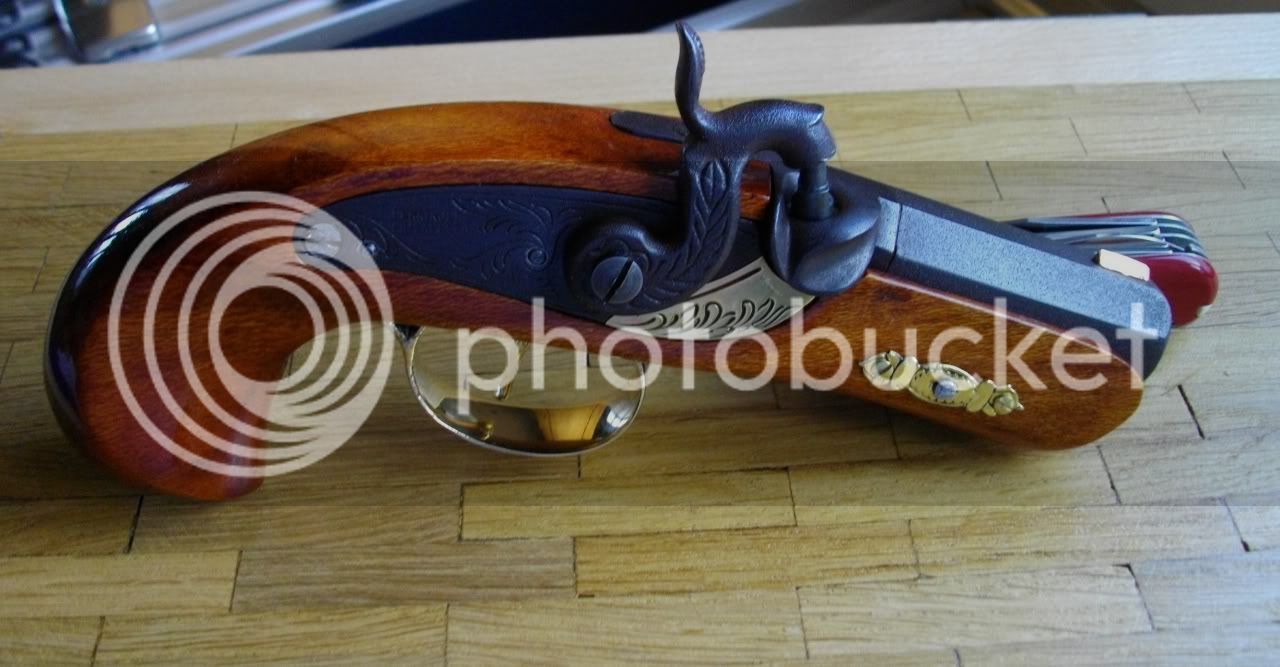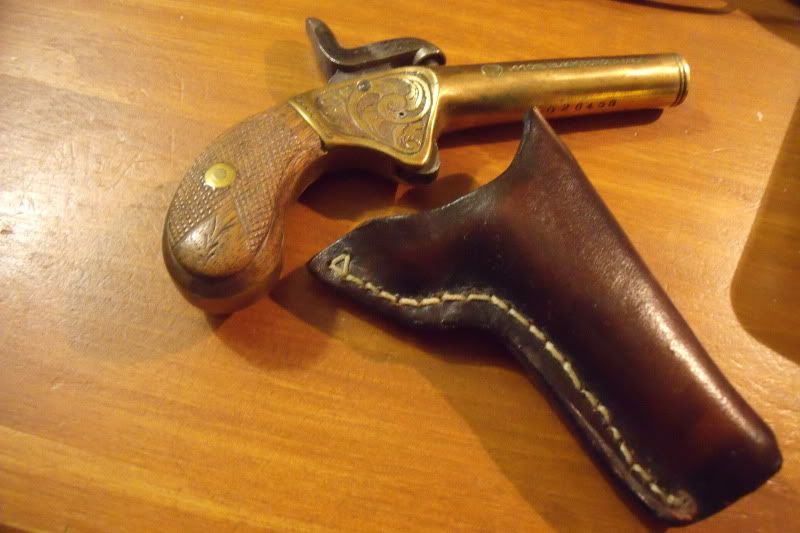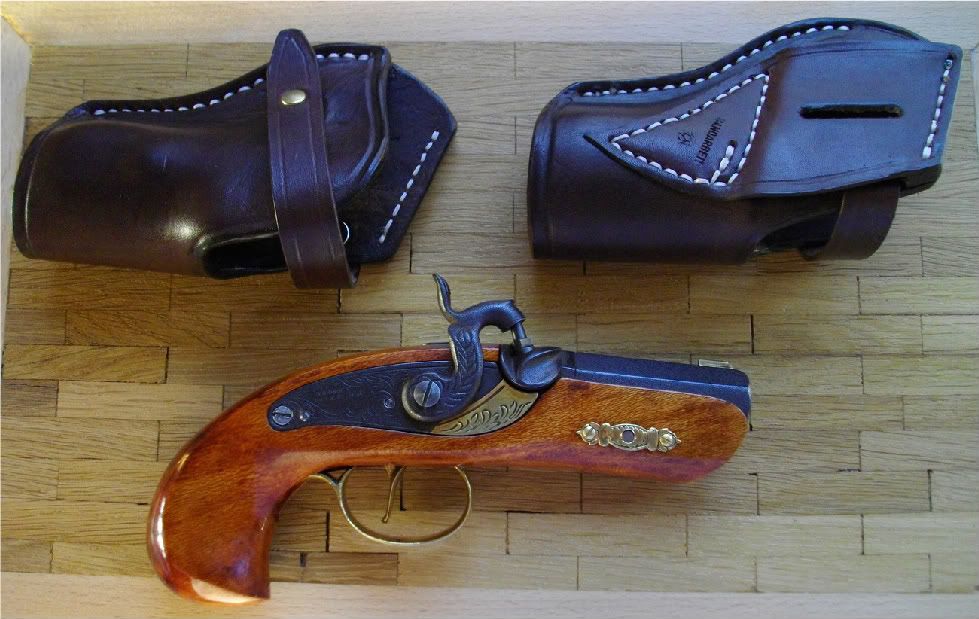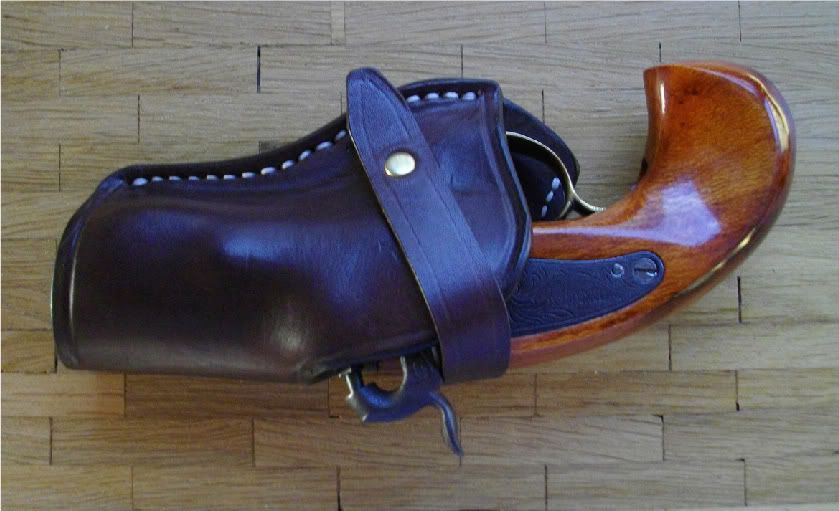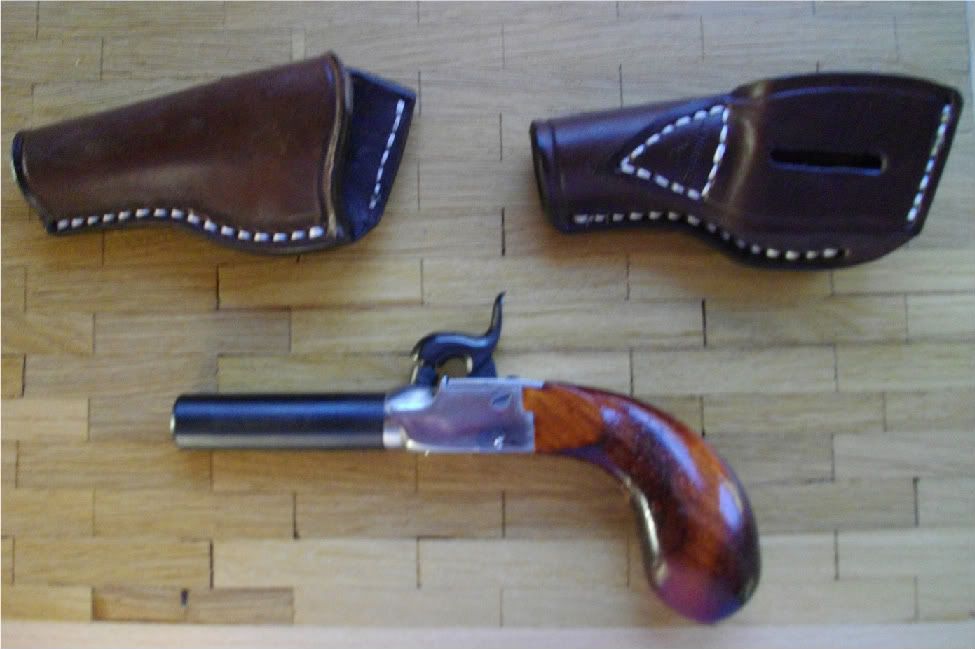Very few( if any) of these were carried in a holster of any kind. Sometimes, pockets would be lined by sewing in leather, that protected the pocket material, and both hid the outline of the pistol through the lighter fabric of a coat, or vest, and made it easier to pull the gun out. Because of the height of the hammer spur, its difficult to make a holster that will keep that spur from catching on your shirt if worn on a belt.
Later ( 2-barrel) derringers were sometimes carried in a rectangular shaped leather holster, in a front pants pocket. Again, the holster was more for protecting the pants, and hiding the outline of the gun, than in speeding the draw, or aiding the carrying of the pistol. The holsters, as the few that survive, were made to fit the pants pocket, rather than the gun.
The Gun is a bit wide to be carried in an inside the waist belt holster. I suppose it could be carried in a shoulder holster, or a cross draw holster. But, to my best knowledge of gun history, this particular gun was NOT carried in any holster. Shoulder holsters didn't come about until the end of the 19th century, when more and more cities passed ordinances prohibiting the open carry of firearms. By then, these guns were no longer being made, and those that existed had been retired, and replaced with more modern pistols.
The cross draw holster would have been the most likely to have been used by gamblers back in the day,. but I have not found a written account of these particular guns being carried in such a holster.
Worn in front of the stomach, the butt of the pistol is centered to the body, making the draw a bit faster. But, such a holster would almost surely eliminate the main benefit of having such a gun, and that is concealment. Far better to carry it in a leather lined pocket in your suit jacket, and, when needed, just shoot through the coat, under the table, with the gun concealed from all until the shot is fired.
These short barreled guns usually could NOT drive a ball through the body of a human. They left a nasty wound, which, if it didn't kill you outright, from hemorrhaging to death, or shock, killed you by giving you peritonitis, or blood poisoning( as it was often labeled in the day). You died a slow painful death over days or weeks, your screams stopped only by passing out, or by strong use of Opiates, Laudanum, a mix of Opium, and alcohol,and Cocaine(Used in the late 19th century, and on into the early half of the 20th century, to quiet people dying of infections from gunshot wounds). :hmm:
